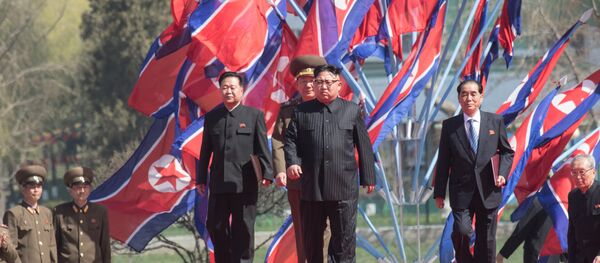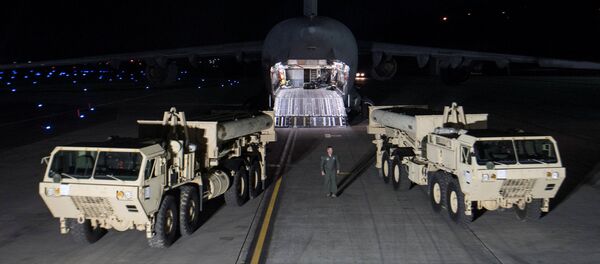The review is aimed at "identifying ways to strengthen missile-defense capabilities, rebalancing homeland and theater defense priorities and providing the necessary policy and strategy framework for the nation's missile defense systems," according to chief Pentagon spokesperson Dana White.
The review will be conducted concurrent to the Nuclear Posture Review and will be led by Deputy Defense Secretary Robert Work and Vice Chairman of the Joint Chiefs of Staff Gen. Paul Selva. The review will also involve interagency partners interested in the matter.
Shift in Priorities
Vasily Kashin, a Russian military expert and research fellow at the Moscow-based Higher School of Economics, noted that the review is not surprising because the US missile defense doctrine is regularly updated.
At the same time, the analyst suggested that taking into account the recent developments focus will be moved from Iran to North Korea.
"In the recent year, a significant re-evaluation has been made into Pyongyang’s military and technical capabilities. While regarding Iran, a more capable country in terms of missile weapons, the situation has been more or less stable, the situation around North Korea has significantly deteriorated," Kashin pointed out.
In Obama’s Footsteps
The expert stressed that in general terms the plan of US President Donald Trump is pretty similar to the policy of his predecessor Barack Obama. Washington is likely to continue the modernization of the US defense industry since the trend complies with Trump’s campaign promise to make America great again.
Kashin’s assumption was echoed by Anton Mardasov, a military analyst and senior expert at the Institute for Innovative Development think-tank.
According to Mardasov, when it comes to the military doctrine Trump will not go against the existing system, even if US generals designated Russia as the number one threat.
Mardasov underscored that Washington’s military priorities do not significantly depend on the person in the president’s chair.
"The US military planning is conducted regardless of who is President because it is crucial for national security. Priorities can change, but based on intelligence data, not president’s opinion. In turn, president relies on his advisers. As a result, the doctrine is unlikely to change dramatically. Trump will not make any unexpected moves," the expert suggested.
Covert Strike Component
In addition, the buildup of the US missile shield fuels a potential arms race and forces other nations to take responsive measures.
According to estimates by the Russian military, in the last 15 years, Washington invested $130 billion in missile defense. In the coming five years, another $55 billion will be unveiled.
Traditions of the Cold War
On May 4, Gen. Raymond Thomas, commander of US Special Operations Command (USSOCOM), identified Russia as one of five "current and enduring" threats to the United States. He said the four other threats were North Korea, Iran, China, and terrorism.
He also claimed that Russia has re-emerged as a "strategic competitor of the US around the globe."
Russia’s Defense Ministry spokesman slammed the Pentagon on Saturday for failing to identify security risks after Thomas’ remark.
"This fixation of some Pentagon generals on Cold War stereotypes and their lack of awareness of real security risks are nothing new to us," Gen. Igor Konashenkov said in a statement.
He also criticized the US military for their "hawkish anti-Russian rhetoric in keeping with the best traditions of the Cold War."
Never miss a story again — sign up to our Telegram channel and we'll keep you up to speed!








